As September gets closer, fall is almost here in New England, meaning soon, Vermont will be covered in the bright reds and yellows that make the season so beautiful.
Typically, leaves start to change color in September and continue to evolve through November. However, the exact timing of fall colors depends on various factors, including location and weather.
Wondering when and where you can catch peak fall foliage in Vermont this year? Here is a look at the Smoky Mountains website's fall foliage forecast for Vermont, broken down by weekly maps:
Vermont fall colors: Week of Sept. 9
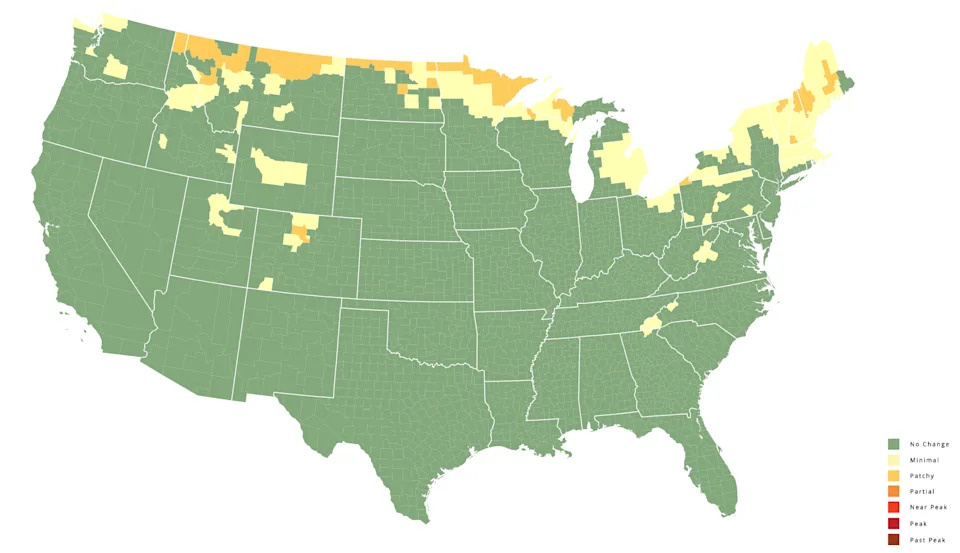
According to the Smoky Mountains website, Vermont leaves will start to see minimal color during the week of Sept. 9, with a small portion of the northern part of the state getting patchy foliage.
Vermont fall colors: Week of Sept. 16
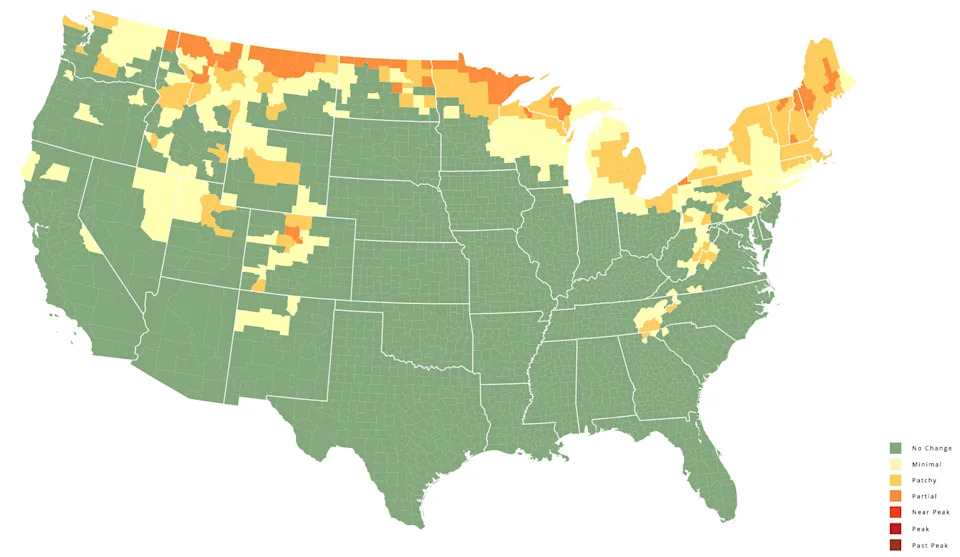
By the next week, patchy foliage will cover the entire state, with some partial foliage in the North, Smoky Mountains says.
Vermont fall colors: Week of Sept. 23
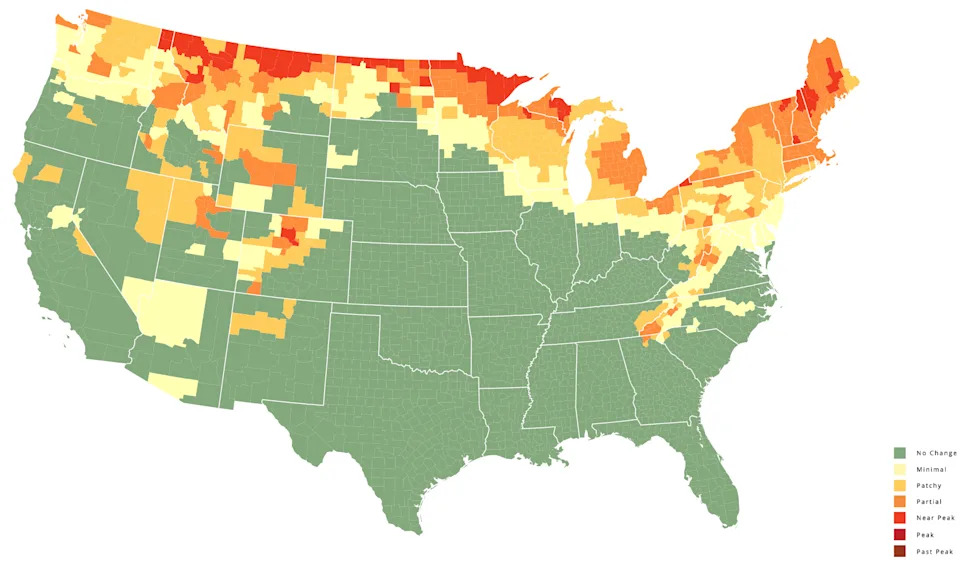
During the week of Sept. 23, Vermont's foliage will be partial as areas in the state's northern part start to near their peak.
Fall weather: When will hot, humid VT weather give way to fall? Cool temperatures may be late this year
Vermont fall colors: Week of Sept. 30
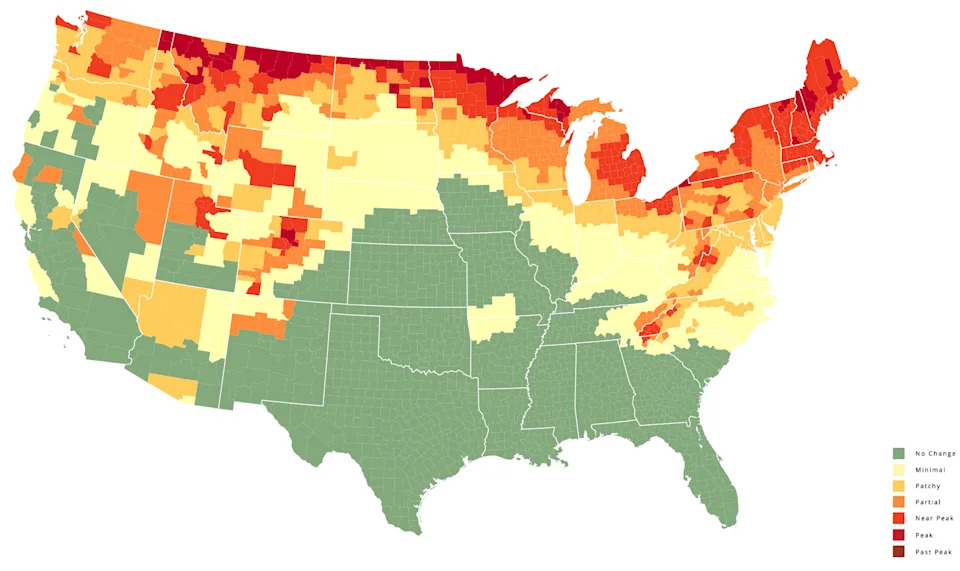
The first week of October will see Vermont covered in vibrant color as the entire state starts to peak.
Vermont fall colors: Week of Oct. 7
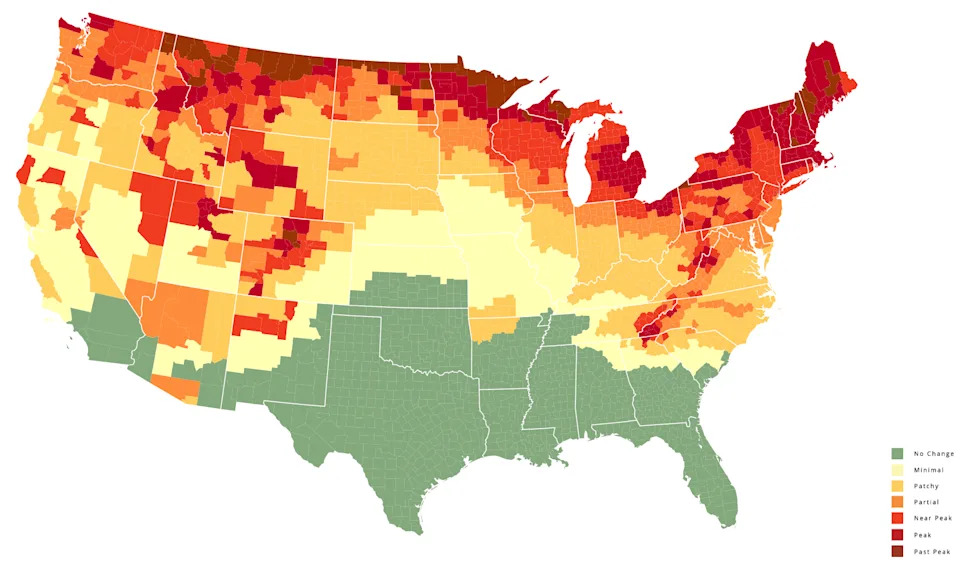
The Smoky Mountains website predicts that Vermont's peak foliage colors will be reached during the week of Oct. 7, covering the state in beautiful autumn hues.
Vermont fall colors: Week of Oct. 14
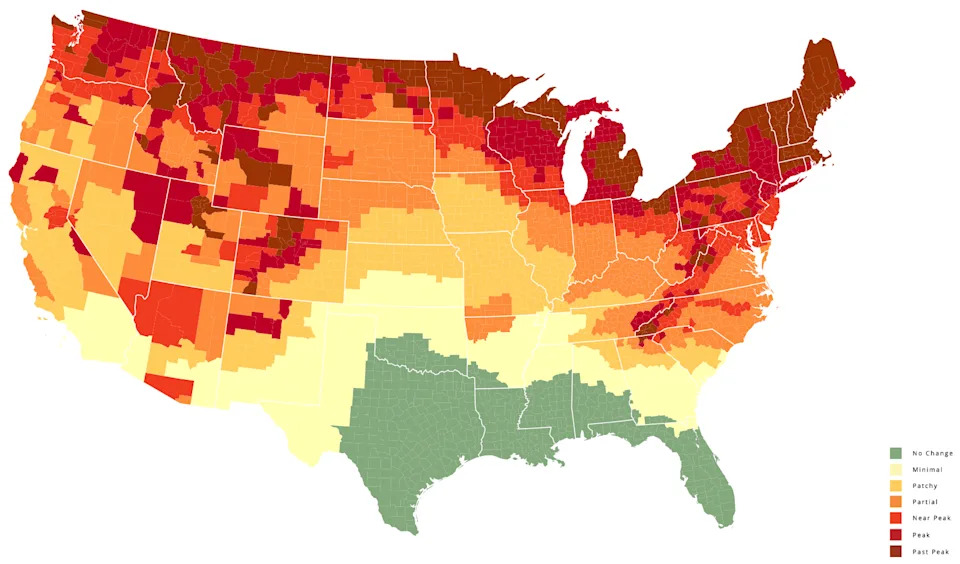
By the week of Oct. 14, foliage in Vermont and most of New England will have passed its peak. At this point, leaves will start to grow duller and darker, with many falling off their branches.
More: This road trip can take you to see New England fall foliage in 4 states. Check it out.
Why do leaves change color in the fall?
As plants receive less and less sunlight in the shortened days of fall, the production of chlorophyll, a substance which makes the leaves appear green by saturating them through turning sunlight into glucose, slows down. Without chlorophyll, the "true" color of leaves comes through, according to the Smoky Mountains website.
Changed leaves then begin to fall off their trees as the trees close off their veins in preparation for protection in winter, meaning the leaves no longer receive nutrients and therefore weaken at the stem.
This article originally appeared on Burlington Free Press: Vermont fall foliage 2025: See week-by-week forecast maps





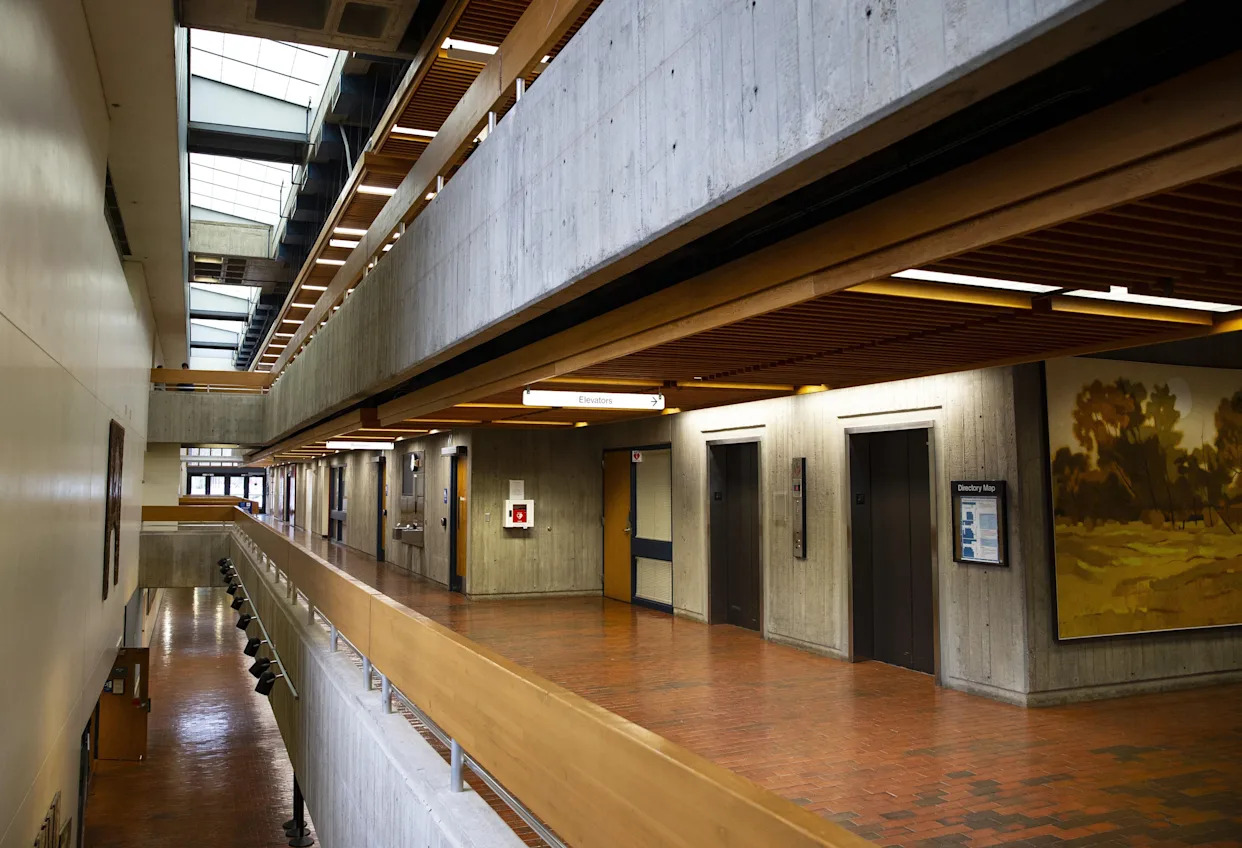

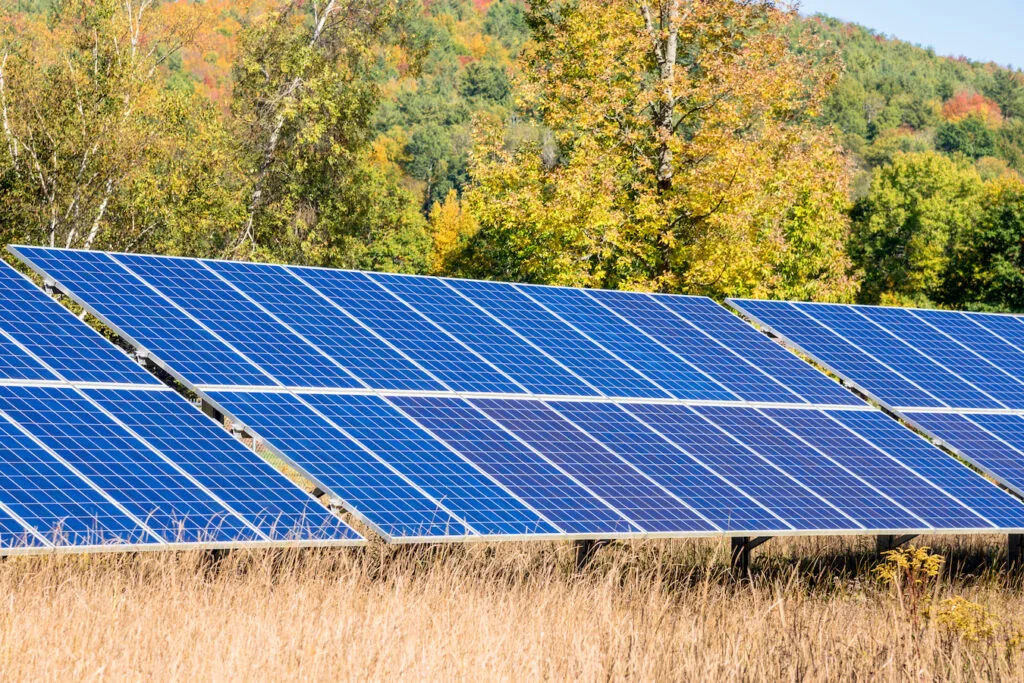
Comments